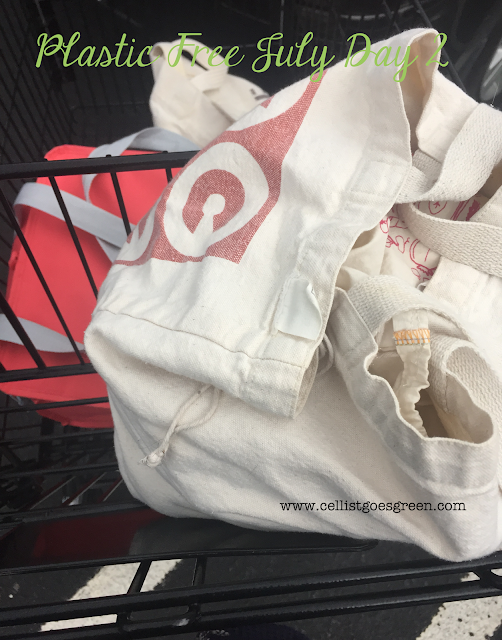Plastic Free July is really about reducing the disposable plastic in
your life. Things like yogurt cups, and coffee pods and plastic bags.
It's not about replacing every item in your home that happens to be made
with plastic. But sometimes other things that aren't meant to be
disposable (or maybe they are?) break.
Here are some things to consider before running out to a big box store to replace something.
- Do I need to replace the item at all? Did I really use it a lot?
- Can it be repaired and still function well? Am I able to repair it easily, or do I know someone nearby who can?
- Can I find a used version that is in good condition?
- If it's something I don't use a lot, can I borrow it from a friend or neighbor?
- Can I find and afford a sustainably made version of the item? (Produced without sweatshops, made of natural materials, etc.)
Two years ago, my plastic hairbrush broke and I bought a
wooden replacement on Life Without Plastic (and one for my husband). It is
still going strong, and will last much longer than the plastic one it
replaced, which wasn't even a year old when it broke.
Another smallish thing in our home I've chosen to replace with a new, but ethically made enamel dustpan and brush. Our plastic one cracked a while ago and was no longer doing its job.
Ninety-five
percent of the furniture in our home is used, either from friends,
Goodwill, Craigslist or off the street (save for our coffee table, which
is actually locally made!). Our couch is used from friends, we have a rocking chair from the side of the road, we got a really awesome mid-century record storage cabinet from Craigslist.
As I've said before, it's about finding a balance between not creating and buying a whole bunch of new stuff and supporting local businesses and companies who are doing the right thing and making ethical and well-made products.
Note: This post contains an affiliate link to Life Without Plastic, a company whose mission and products I fully support.
------------------------------------
If you aren't familiar with Plastic Free July, take a look at this post.
Basically, it's a month-long challenge to reduce the amount of
disposable plastic you use. It's a great starting point if you just
want to give cutting out disposable plastic a try.
My first Plastic Free July was in 2013(!), and this month I'd like to
highlight some of the things I do to reduce my plastic use, and some
struggles. Many things are part of my routine at this point (buying in
bulk, refusing plastic silverware, etc.), but I am not perfect, and I
always find this challenge to be a good time to refocus and look at what
trash I am actually producing.











